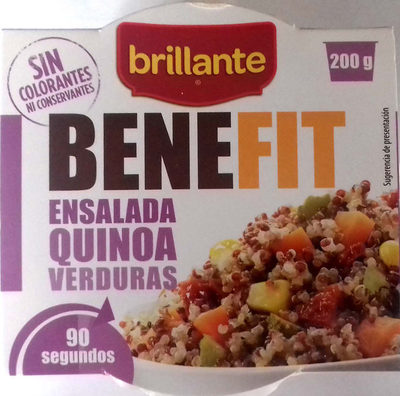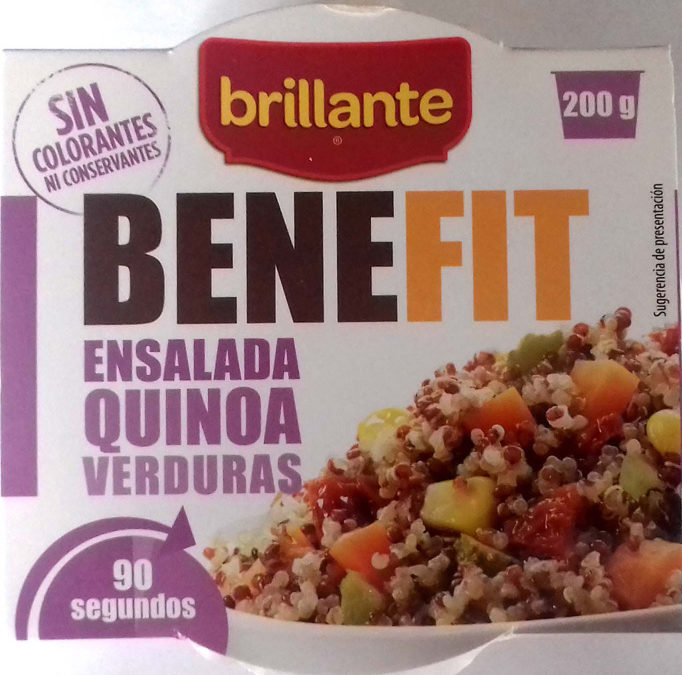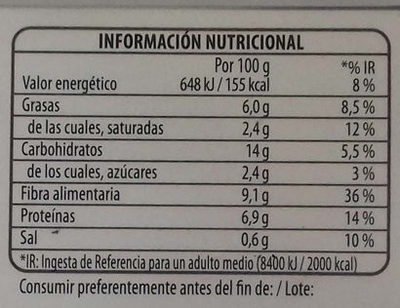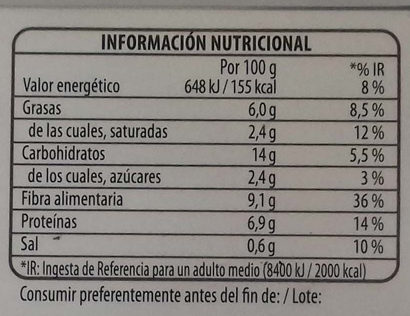Benefit ensalada quinoa y verduras - Brillante - 200 g
This product page is not complete. You can help to complete it by editing it and adding more data from the photos we have, or by taking more photos using the app for Android or iPhone/iPad. Thank you!
×
Código de barras: 8410184032032 (EAN / EAN-13)
Common name: Ensalada de quinoa y verduras
Cantidade: 200 g
Empaquetado: en:Plastic, en:container, en:Terrine pot, es:Microondable, es:Producto
Marcas: Brillante
Categorías: en:Plant-based foods and beverages, en:Plant-based foods, en:Meals, en:Prepared salads, en:Microwave meals, en:Plant-based meals, en:salads, es:Ensaladas-de-quinoa
Etiquetas, certificacións, premios:
en:No gluten, en:Vegetarian, en:No preservatives, Source of fibre, Source of proteins, en:100% vegetable, en:Green Dot, High fibres, High proteins, en:No colorings
Link to the product page on the official site of the producer: https://www.brillante.es/productos/ensal...
Country: España
Matching with your preferences
Medio ambiente
Empaquetado
Transportation
Report a problem
Data sources
Product added on by kiliweb
Last edit of product page on by packbot.
Páxina do produto tamén editada por acuario, cris87, date-limite-app, musarana, neptuno, openfoodfacts-contributors, sdianez, yuka.SFpzWUZQME4vS2hibnMwVStrekY2L1J2eW8rRmIxeStCTlF4SUE9PQ, yuka.V29Bc0dwc3dqZHd0bXNBUytqbUY0dGR6bnJhb1pXZUZFOUFmSVE9PQ.








